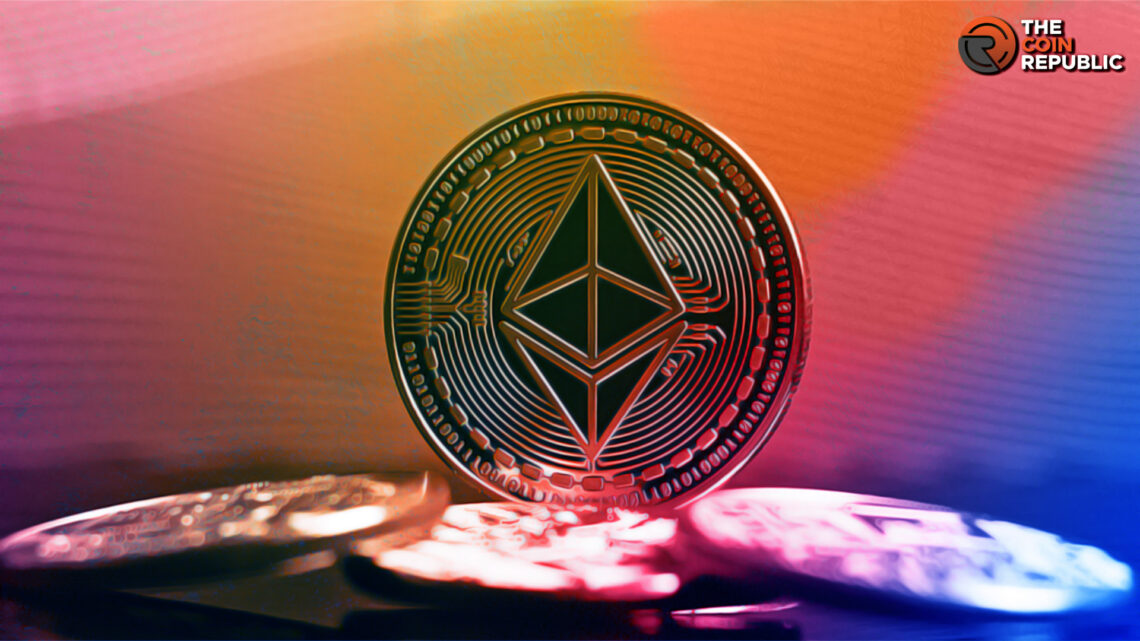- 1 Ethereum (ETH) completed 8 glorious years since its inception in the year 2015.
- 2 Inspired by Bitcoin, Ethereum took everything a step further to pave the way for the future.
- 3 Ethereum is also home to a myriad of meme coins and stablecoins like DAI, USDC, and the like.
The second biggest cryptocurrency blockchain network Ethereum and native token Ether (ETH) turned eight on July 30, 2023. Bitcoin creation was one of the crucial and biggest efforts to form a parallel system against the traditional financial system. Though Bitcoin (BTC) was a massive stepping stone, Ethereum (ETH) continued the process to let the system stand strong.
Ethereum creators, highly inspired and influenced by Satoshi Nakamoto and his creation of Bitcoin (BTC), took the initiative to utilize the potential of blockchain rather than limiting it to transactions only.
Ethereum Foundation sent Ethereum blockchain launched for the first time on July 30, 2015, as the organization’s CCO, Stephan Tual, noted in a blog post at the time. In the short timeline of eight years, the blockchain network went through many ups and downs. It played a crucial role in founding a broader cryptocurrency and decentralized financial system infrastructure.
The idea of Ethereum started with young Russian-Canadian developer Vitalik Buterin who was also fascinated by Bitcoin (BTC). Initially, the co-founders group included Charles Hoskinson and Anthony Di Lorio along with Buterin who was soon joined by Gavin Wood, Joseph Lubin, etc.
Ethereum Brings Smart Contracts to Blockchain
As much as Bitcoin (BTC) has the credit to bring the utility of the blockchain network to facilitate transactions, Ethereum (ETH) has taken it further. Ethereum blockchain brought smart contract programmability for the first time.
The self-executable programmable set of codes actualizes the decentralized financial system concept. It was possible to create organizations and systems that can run without human intervention.
DeFi Became Reality After Ethereum-Based Smart Contracts
Decentralized finance (DeFi), the financial system without the need for centralized entities or intermediaries, is made possible because of self-executable smart contracts.
Many decentralized platforms including decentralized applications (DApps), decentralized exchanges (DEXs), lending protocols, etc. emerged as decentralized autonomous organizations (DAOs) formed.
Home to Initial Stablecoins and Memecoins
The expansion of the cryptocurrency system saw the addition of more crypto assets including stablecoins and memecoins. Today’s famed stablecoins including Tether (USDT), USD Coin (USDC), DAI (DAI), etc. are based on the Ethereum blockchain.
Memecoins became the most popular segment within the cryptocurrency space. Given the reason behind their origin and price movements decided on the basis of sentiments across respective communities over social media, it remains mostly volatile and less valued. Shiba Inu (SHIB), the second biggest memecoin is based on Ethereum.
Emergence of Non-fungible Tokens on Ethereum
Non-fungible tokens (NFTs) are another popular segment in the digital assets industry. The art pieces are majorly based on blockchain known for being ‘non-fungible’ or replaceable. An NFT will be the only one existing over a blockchain and the system ensures the properties and traits would be exclusive.
The most expensive NFT of all time, the Merge which sold for over $91 Million, was created over Ethereum. The first and largest NFT marketplace OpenSea is also based on the network.
Ethereum Co-Founders Expanded Crypto Ecosystem
The Ethereum network went on to expand since its launch and the number of users, projects, capital, etc. only rose significantly with time. With time, the co-creators of this significant blockchain network parted ways.
Charles Hoskinson, who wanted to make Ethereum a for-profit organization and left because of differences, later created Cardano (ADA). The blockchain network had the facilities akin to Ethereum along with add-on features like transaction speed and low gas fees, etc.
Gavin Wood also created the interoperability and scalability focusing Polkadot (DOT) blockchain and Kusama (KSM) like crypto projects.
Steve Anderson is an Australian crypto enthusiast. He is a specialist in management and trading for over 5 years. Steve has worked as a crypto trader, he loves learning about decentralisation, understanding the true potential of the blockchain.


 Home
Home News
News










